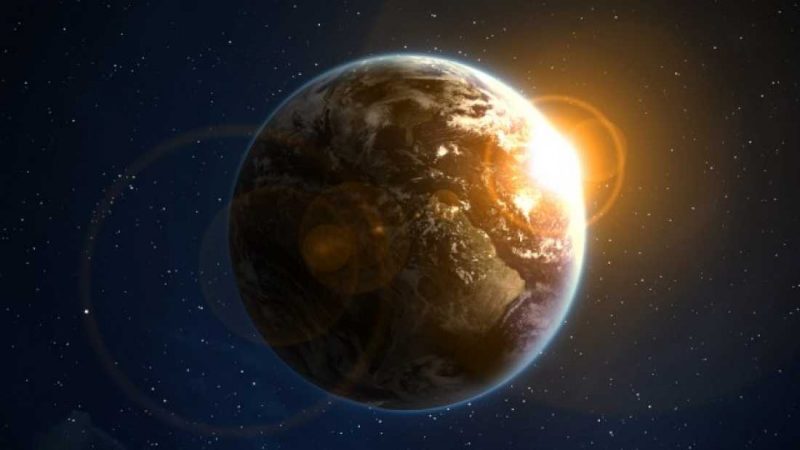
It used to be easy to know what was and wasn’t a planet. Planets were big, bigger than any smaller moons that happened to be orbiting them. They were round. They orbited our sun. Then, in 2006, the erstwhile planet Pluto lost its major planet status, becoming a dwarf planet. Around that time, astronomers were discovering a plethora of small bodies in our own solar system, so that there are now half a million known asteroids and over a thousand Kuiper Belt Objects, including five recognized dwarf planets counting Pluto. Astronomers also now know several thousand exoplanets orbiting other stars. The dramatic expansion in the number of known objects orbiting our sun and other suns has caused some astronomers to try to override or re-define the 2006 planet definition from the International Astronomical Union (IAU), which caused Pluto to lose full planet status. The most recent new planet definition comes from a Johns Hopkins astronomer, Kevin Schlaufman. Read three earlier planet definitions below.
Schlaufman’s definition is based on mass. In a paper published January 22, 2018, in the peer-reviewed Astrophysical Journal, Schlaufman has set the upper boundary of planet mass between four and 10 times the mass of the planet Jupiter.

Schlaufman said in a statement that setting a limit is possible now mainly due to:
… improvements in the technology and techniques of astronomical observation. The advancements have made it possible to discover many more planetary systems outside our solar system and therefore possible to see robust patterns that lead to new revelations.
His statement explained:
The conclusions in the new paper are based on observations of 146 solar systems … Defining a planet, distinguishing it from other celestial objects, is a bit like narrowing down a list of criminal suspects. It’s one thing to know you’re looking for someone who is taller than 5-foot-8, it’s another to know your suspect is between 5-foot-8 and 5-foot-10.
Schlaufman said his definition will help distinguish between two “suspects:” a giant planet and a celestial object called a brown dwarf. Brown dwarfs are more massive than planets, but less massive than the smallest stars. They are thought to form as stars do. His statement described his thinking:
For decades brown dwarfs have posed a problem for scientists: how to distinguish low-mass brown dwarfs from especially massive planets? Mass alone isn’t enough to tell the difference between the two … the missing property is the chemical makeup of a solar system’s own sun. [Schlaufman] says you can know your suspect, a planet, not just by his size, but also by the company he keeps. Giant planets such as Jupiter are almost always found orbiting stars that have more iron than our sun. Brown dwarfs are not so discriminating.
That’s where his argument engages the idea of planet formation. Planets like Jupiter are formed from the bottom-up by first building-up a rocky core that is subsequently enshrouded in a massive gaseous envelope. It stands to reason that they would be found near stars heavy with elements that make rocks, as those elements provide the seed material for planet formation. Not so with brown dwarfs.
Brown dwarfs and stars form from the top-down as clouds of gas collapse under their own weight.
Schlaufman’s idea was to find the mass at which point objects stop caring about the composition of the star they orbit. He found that objects more massive than about 10 times the mass of Jupiter do not prefer stars with lots of elements that make rocks and therefore are unlikely to form like planets.
For that reason, and while it’s possible that new data could change things, he has proposed that objects in excess of 10 Jupiter mass should be considered brown dwarfs, not planets.

Will Schlaufman’s definition be accepted by other astronomers? Well … the field of planet definitions has gotten crowded. It’s becoming hard to imagine a definition that will be acceptable to every astronomer. For example: here are three more planet definitions:
1. The International Astronomical Union (IAU) planet definition in 2006:
A celestial body that (a) is in orbit around the sun, (b) has sufficient mass for its self-gravity to overcome rigid body forces so that it assumes a hydrostatic equilibrium (nearly round) shape, and (c) has cleared the neighborhood around its orbit.
Because the IAU took it upon itself early in the 20th century to be the body that names and defines things in space, this definition is why Pluto is no longer considered a major planet. In other words, Pluto – though it has a moon, an atmosphere, weather and many planet-like qualities – has not yet cleared the neighborhood of its orbit in space.

2. Planet definition from Jean-Luc Margot at UCLA, offered in 2015. He devised a formula to tell if a body has cleared its orbit of debris (part of the IAU definition for a planet), just by knowing a body’s mass, its orbital period, and the mass of the star it orbits. This formula can be worked out via readily available data, even for most exoplanets. Hence, according to Margot: a body is a planet when it is in orbit around one or more stars, it dominates its orbit as per the formula, and has a mass below 13 Jupiters. There’s no need to require an object to be spherical, as required by the IAU definition, because, Margot has said, bodies that can clear their orbits will almost certainly be round. Read more about Margot’s planet definition.

3. Planet definition via NASA scientists, led by Alan Stern, in early 2017. Stern is the instigator and principal investigator of NASA’s New Horizons mission, which performed a first-ever flyby of Pluto in 2015. Pluto was a major planet when Stern launched his New Horizons mission in January, 2006, but Pluto was demoted to dwarf planet in August of that same year. Not surprisingly, the team’s planet definition focuses on getting rid of the aspect of the IAU’s definition that requires clearing the orbit of debris (the same aspect that caused Pluto’s demotion). The jargon-laden version of their definition is:
A planet is a sub-stellar mass body that has never undergone nuclear fusion and that has sufficient self-gravitation to assume a spheroidal shape adequately described by a triaxial ellipsoid regardless of its orbital parameters.
Their layman’s version is simply:
Round objects in space that are smaller than stars.
According to Stern’s planet definition, our solar system has not 8 major planets, but more than 100, including Pluto, of course, and including Earth’s moon.
Read the NASA scientists’ planet definition.
So you see that this formerly simple question – “what is a planet?” – is not so simple anymore.
And, by the way, what we’re seeing in this community of professional astronomers is an interesting microcosm, isn’t it? It parallels the larger world of incredibly divided and divisive political thinking in, for example, the U.S. One wonders how much the fast increase in human population in recent decades has contributed to the crazy political situation (human population doubled between 1950 and 1987, from 2.5 to 5 billion people; now there are an estimated 7.6 billion people on Earth). Meanwhile, the number of professional astronomers has increased, too. I couldn’t find any solid numbers on how much, but here’s a discussion.
Since both world population and the number of astronomers isn’t likely to decrease dramatically any time soon, it’ll be interesting to see how this ongoing divisiveness (in planet definitions, and, well, everything else) gets resolved … if it does, anytime soon.
Maybe astronomers will act honorably and wisely and set an example for the rest of us! Maybe …
Bottom line: What’s a planet? What’s a dwarf planet? What’s a brown dwarf? In recent years, astronomers have grappled with these definitions. The newest proposal comes from Johns Hopkins.











